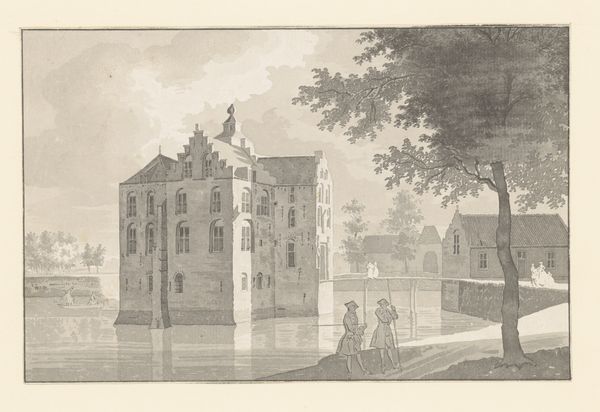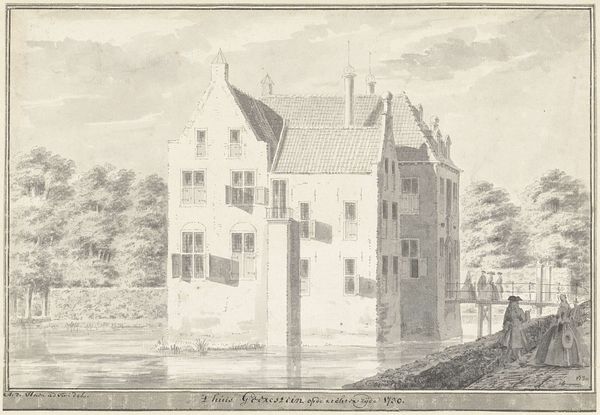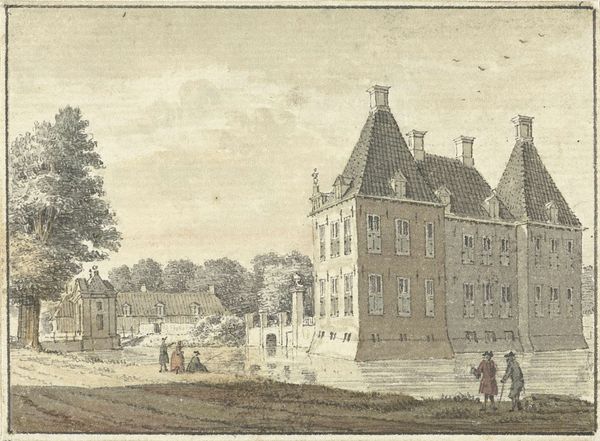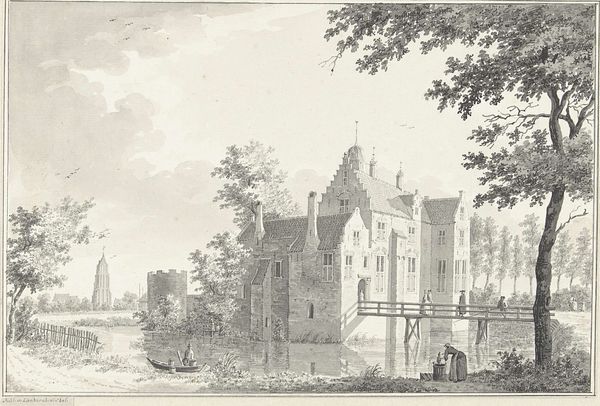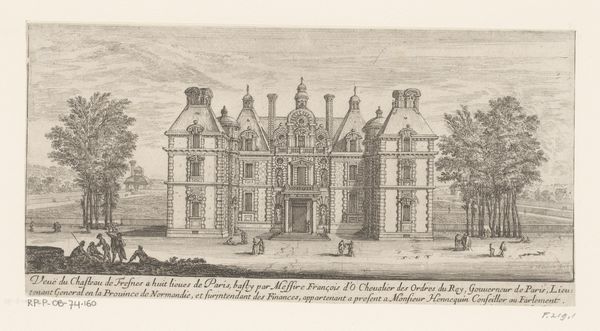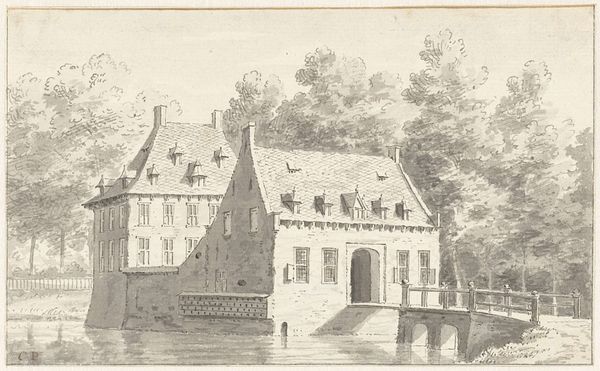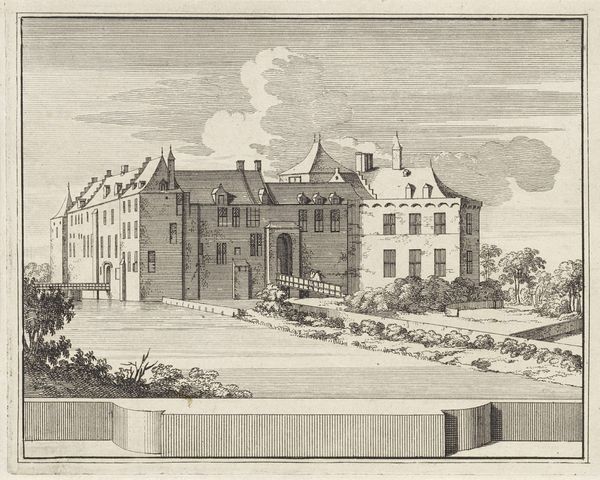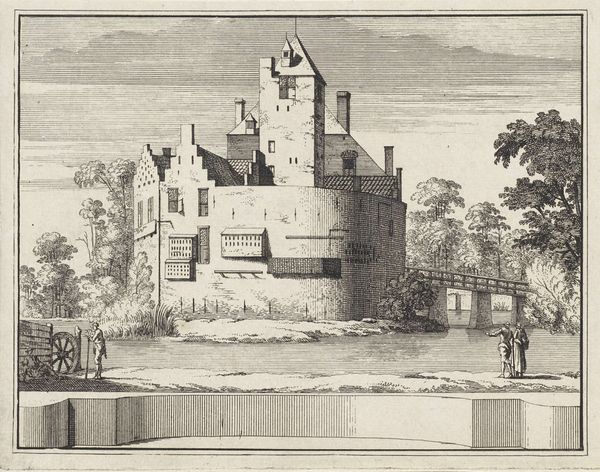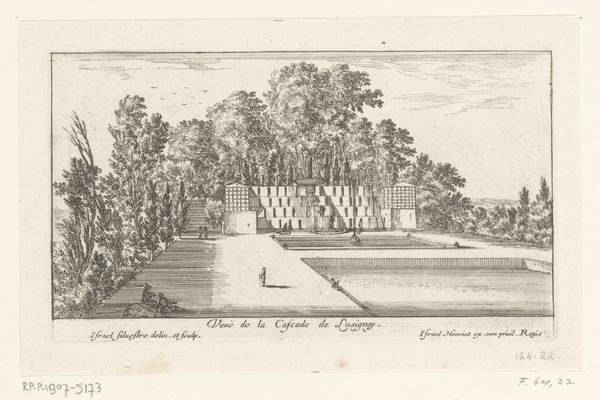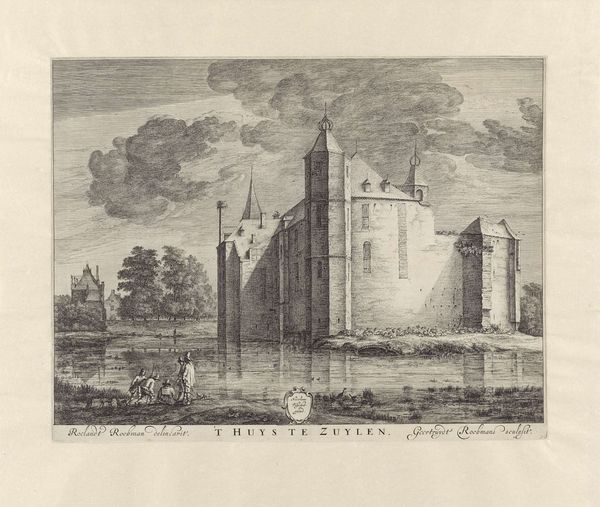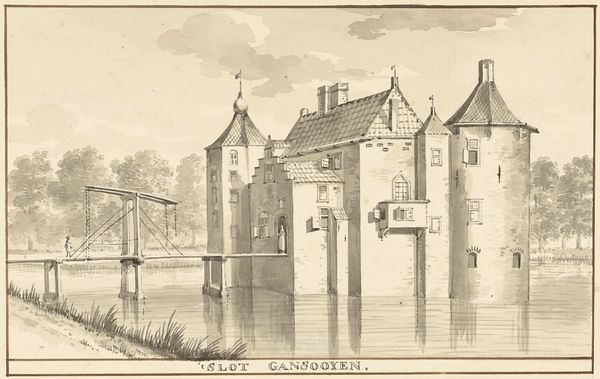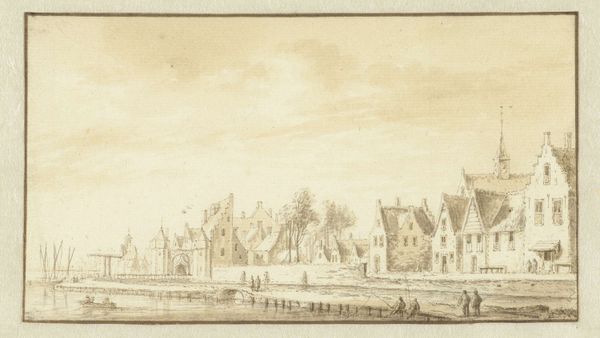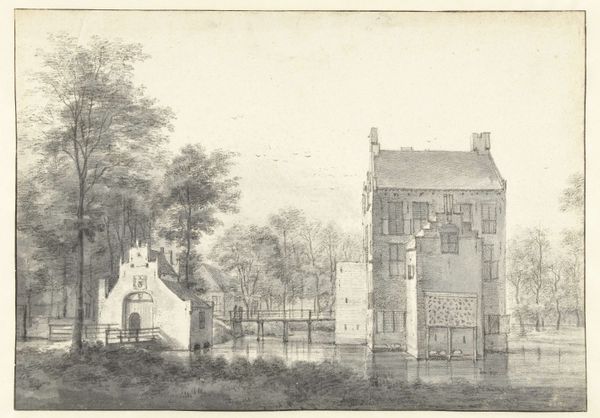
Dimensions: height 139 mm, width 199 mm
Copyright: Rijks Museum: Open Domain
Editor: This etching, "Gezicht op het kasteel te Gellicum," by Caspar Jacobsz. Philips, made sometime between 1752 and 1789, portrays a Dutch castle surrounded by water. The intricate details of the architecture, captured through the etching technique, are really striking. What does this scene suggest to you in terms of its historical setting and cultural values? Curator: Well, considering the socio-political context, these types of landscapes depicting castles weren’t simply picturesque. They reflected the power and prestige of the elite class during that period. Note how the castle dominates the landscape. It isn’t just a building; it is a symbolic representation of authority and land ownership. What do you notice about the relationship between the castle and the surrounding water? Editor: It seems defensive, almost like a moat protecting the residents, giving an impression of seclusion and security. Was there a political message conveyed in making the castle look so strong? Curator: Precisely! During the Dutch Golden Age, showing such structures visually asserted the owners' social standing and implied a historical narrative of nobility and protection, often idealised. The patronage system influenced the artwork; the commissioner wanted to express stability and permanence during times of political upheaval, thereby contributing to a particular, constructed national identity. Are these prints available for the general public? Editor: Most likely, yes. Prints like these made these images far more accessible, thereby communicating ideals and solidifying the owners’ intended self-representation amongst a larger audience. That's a potent way of influencing social perception. Curator: Exactly. It’s not just a depiction; it’s participation in social dialogues. The print itself is not merely an image, it’s a medium of historical messaging. Understanding that, I believe, adds layers to the viewer’s perception of such artwork. Editor: I never considered how distribution methods themselves play into the work's purpose. It is truly more than what meets the eye!
Comments
No comments
Be the first to comment and join the conversation on the ultimate creative platform.
